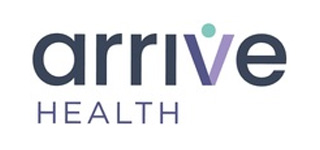Predictive and prescriptive analytics are just making an impact on healthcare and creating new opportunities for developers.
COVID-19 has caused a backlog for many hospital departments, key among them is elective surgery. Over 80 percent of hospitals across the country have canceled or postponed 70 percent of their elective surgeries over the past couple of months, most of which will need to be rescheduled in addition to the ongoing and new caseload.
Sanjeev Agrawal, President, LeanTaaS, says data analytics can help hospitals and other healthcare providers facing this challenge in the following ways:
-
- Estimate their backlog so they can assess how long it will take to recover based on the levers they can use (e.g., working longer weekday hours, weekends, etc.).
- Create a way to prioritize which surgeries to do first.
- Estimate their “true capacity” based on availability of PPE, staff, equipment and other key operating constraints.
- Decide how to allocate operating room time to surgeons and clinics based on the above.
- Track and measure progress relative to the backlog.
Agrawal says that to help hospitals and healthcare organizations make data-based decisions, the LeanTaaS product team has developed the COVID-19 Backlog Recovery Calculator, based on in-depth discussions with operating room professionals around the country, including 100+ health systems in our customer network.
“The purpose of the calculator is to enable health systems to model how long it will take to recover their postponed surgeries and case backlog when they are able to open their ORs to varying degrees,” Agrawal says. “It also helps them model potential lost volume from the economic slowdown as well as the impact of a possible second wave of COVID-19 later this year.”
He adds that the calculator is open to the community and can be accessed on any web browser. He says users complete 12 fields within four categories, including operating room metrics pre-COVID-19, expected dates when OR capacity will return, levers to accommodate surge volume, and lost volume considerations.
“Based on the inputs, the tool estimates how many months it will take for each institution to recover its surgery case backlog and predicts the number of additional cases per month, on top of each hospital’s baseline volume,” he explains.
What Developers Can Learn from Data Analytics Role in Healthcare Recovery
Agrawal says although the data from the LeanTaaS calculator is most valuable to health systems, it has value to developers as an example of how predictive and prescriptive analytics can be applied in healthcare.
“Industries like transportation, aviation, retail and others have benefited a lot from algorithms that are just finding a home in healthcare,” Agrawal says, citing use cases such as informing:
-
- Bin packing that has helped UPS and FedEx pack their trucks efficiently
- The revenue impact overbooking has had on airlines
- Forecasting and predicting taste and demand that Amazon, Netflix, Pandora and other companies use based on clustering like individuals
- Uber’s matching of supply and demand at each street corner
- How Waze guides riders throughout their journey
“All of these are analytical techniques healthcare is just getting started on and can have a huge positive impact on operations and patient care,” Agrawal says. “If this is interesting, think about a role in healthcare analytics — likely the most untapped opportunity of all industries!
He adds, “We’d love to hear from anyone in the community who has thoughts or inputs on how we might improve the model.”



